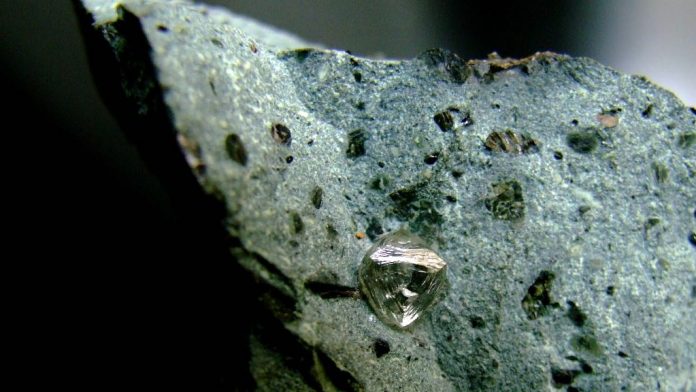Scientists just uncovered a rare “super-deep” diamond in South Africa that’s wrapped in calcium silicate perovskite – the fourth-most abundant mineral found on Earth.
While most of us might value diamonds for their beauty, geologists like the minerals for what they can tell us about the goings on deep within our planet. For diamonds to form they need two basic conditions: extreme heat and extreme pressure. Both of these things are in ample supply within the mantle, which forms most of the structure of Earth. The mantle itself is divided into three parts; the upper layer, the transitional layer, and the lower layer.
Despite being made up of solid, hot rock under unimaginable pressure, the mantle still has water within it. This comes in a variety of different forms, with some water molecules being mixed in with other minerals. Only now are scientists beginning to fully understand just how much water is being held more than 600 kilometers (370 miles) under our feet.
One form that the water takes under such pressures is a crystalline structure known as ice VII. We’ve known that ice VII exists deep within the Earth, and it has even been created in the lab. But for obvious reasons, it has proven impossible to find a naturally occurring sample of ice VII at the surface. That is, until now.
Researchers found that some diamonds collected from mines in southern Africa and China contained samples of ice VII, reporting their discovery in Science. This makes them the first-known naturally occurring examples of ice VII ever discovered, but what is more, they tell us that there must be liquid water floating around even under such extreme pressure and heat.
They know this because, for the ice VII to have ended up in the minerals, it must first have been in a liquid state as the diamonds were forming in the transitional zone. This water was encapsulated within the diamond, and would have remained liquid due to the intense heat down there. As the diamond was pushed to the surface, it would have cooled while still under pressure, and the ice VII formed within.
It has long been suggested that there is liquid water down within the mantle – however improbable that might sound – but this is the first direct evidence of its existence. Exactly how common it is, however, is trickier to discern, but previous studies have suggested that it could amount to the same quantity as all the planet’s oceans.















